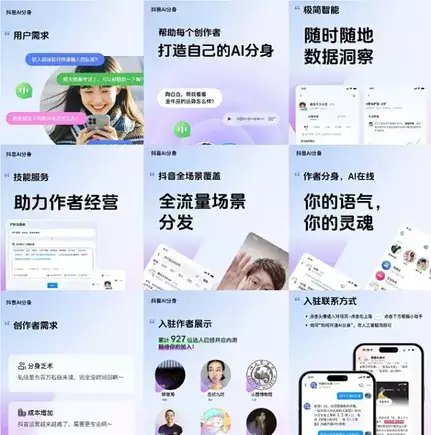As advancements in technology shape our social landscapes, the emergence of virtual avatars in digital interaction poses a fascinating question: are we on the verge of a shift away from traditional human engagement? This speculation gains momentum from Meta CEO Mark Zuckerberg’s recent insights, suggesting that AI-generated content is set to revolutionize the social media experience. Following suit, TikTok seems to be considering similar innovations through its Chinese counterpart, Douyin, which is developing an ambitious project centered around AI avatars. This article explores the implications of these trends and their potential impact on our social interactions online.
Meta’s journey towards integrating AI avatars reflects a broader movement toward more immersive and user-friendly digital experiences. The company’s recent Connect event showcased advanced tools enabling creators to forge dynamic video representations of themselves. These avatars would utilize historical data from users’ past interactions and posts, ultimately providing a more personalized experience as they engage with followers—even when the true creator is offline.
On the other side of the globe, Douyin is implementing its own “V Project,” featuring similar capabilities. This initiative offers creators the chance to interact continually with their audience through AI avatars that not only mirror their identities but also facilitate real-time conversations and provide thoughtful insights. This innovation could allow creators to maintain audience engagement while redirecting their focus towards new content and strategies for growth.
China is leading the charge in the rise of virtual influencers, with predictions indicating that the number of registered digital avatar companies could surpass 993,000. These firms specialize in producing cost-effective virtual characters capable of maintaining active, engaging presences in various applications. The demand for these avatars is particularly notable in the realm of live shopping streams, indicating significant interest from brands seeking to collaborate with these digital personalities.
As Douyin enhances its avatar technology, these digital characters will gain even more interactive capabilities, allowing them to engage in comment sections, direct messages, and live streams. This shift caters to both users and creators, potentially streamlining content creation processes and generating new revenue streams. However, the widespread success of such avatars in the Western market remains uncertain, as many trends that thrive in China have struggled to resonate with U.S. audiences.
The question remains: will Western audiences embrace this format of interaction as readily as their Chinese counterparts? Some precedents exist that suggest otherwise. Shopping features on platforms like TikTok have not gained the same traction in the U.S. as they have in China, raising questions about whether virtual avatars will find a receptive audience. Meta seems undeterred, optimistic that the novelty and engagement potential of AI bots could prove alluring to users hungry for interaction, even if it comes at the expense of genuine human communication.
Critics, however, remain skeptical. The essence of social media has always been real human connection—the thrill of conversing with a star or having a meaningful exchange with a peer. The conversion of these authentic interactions into pre-programmed sequences, albeit dressed in lifelike avatars, feels more like a simulation than genuine engagement. Even though chatbots, such as ChatGPT, have found their niche as sounding boards, they lack the nuances of human emotion and connection that define true social interactions.
Could it be that users, in their quest for likes, follows, and engagement, might settle for these artificial interactions? As technology evolves and user experiences adapt, what formerly constituted authentic engagement may gradually become less important. The challenge lies in finding the balance between embracing new technology and preserving the human touch that initially attracted users to these platforms.
The rise of virtual avatars presents both exciting opportunities and meaningful challenges in harnessing technology for interaction. As platforms implement these AI-driven elements, it is essential to critically evaluate whether they serve to amplify human connection or detract from it. Only time will tell if these digital representations will genuinely enhance user experience or fall short of the profound engagement that only real people can provide. Ultimately, the question may not only be about technological advancements but also about the evolution of our societal values toward connection and authenticity in the digital age.


Leave a Reply